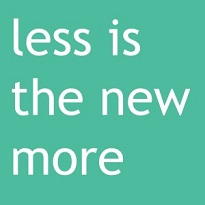We’ve all heard the phrase “Exercise is the best medicine” and I think anyone who has chosen fitness as a profession would probably agree with that. However, no medicine is equally good at any dose; too little and the desired effects will not be achieved, too much and negative side effects result. Dosage in the context of exercise means training load: the intensity, duration, and frequency of a given activity. Arthur Jones, inventor of Nautilus exercise equipment, coined the term “minimum effective load” (MEL) in relation to strength training. He defined MEL as “the smallest load needed to get the desired outcome,” noting that doing more than this is at best a waste of effort and at worst, detrimental to progress or even harmful.
The same rule applies to all forms of exercise and has been referred to as minimum effective dose (MED) (a term made popular by Tim Ferris in 4 Hour Body). Ferris summarizes it well in the following statement:
“To boil water, Minimum Effective Dose is 212 degrees Fahrenheit (100 Celsius) at standard air pressure. Higher temperatures will not make it more boiled; boiled is boiled. Higher temperatures just consume more resources that could be used for something more productive.”
The concept of MED can be applied to fitness pursuits of all kinds but the outcomes that are expected/desired must be defined before one can determine an MED. For example, research shows that the MED for exercise that will lower blood pressure is different than what it might be for weight loss. The focus of this article will be to examine how the concept of MED can be applied to indoor cycling classes utilizing power to teach classes based on a seven-zone model.
Just because some is good doesn’t mean more is always better. Doses above the MED may add more fatigue, but does that additional fatigue equate to fitness gains? Often the answer is no; rather than a significant fitness increase, the result is unnecessary residual fatigue. This is counterproductive if it negatively impacts the everyday activities of our clients’ lives, to say nothing of their subsequent workouts. Much like taking enough blood pressure medicine is good but taking more may cause problems, we want to give our clients the smallest dose that will produce the desired effect or outcome, and not more than that. Joe Friel, in The Cyclist’s Training Bible, says it this way: “An athlete should do the least amount of the most specific training that will bring about continued improvement.”
Just as overdosing can create unwanted side effects, underdosing has its own problems. This is where the “E” (for ”effective”) in MED matters. There IS a dose that is too small to create the training stimulus necessary for the change in our physiology we want; change in any fitness-related outcome requires adequate (effective) overload.
MED and Power Zone Training


So good!!! Thanks for making training do practical here.
Outstanding descriptions. Thank you!
Question: While I am familiar with the zones and suggested time in a zone, I am more curious about optimal recovery time after Z4-Z7 work. Can you offer any information for recovery times? Thanks!
Excellent article! Thank you!
Perfect timing! I was needing new ways to describe the work in different trining zones that aren’t too Sciences-y, and your descriptions are perfect for that! Question: I was wanting to do a pyramid that peaks in Z5 (anywhere in Z5), but it sounds like asking them to go back down the pyramid from Z5 to Z4 then 3 is too much to ask. Should I stick with ladders for these kinds of efforts?